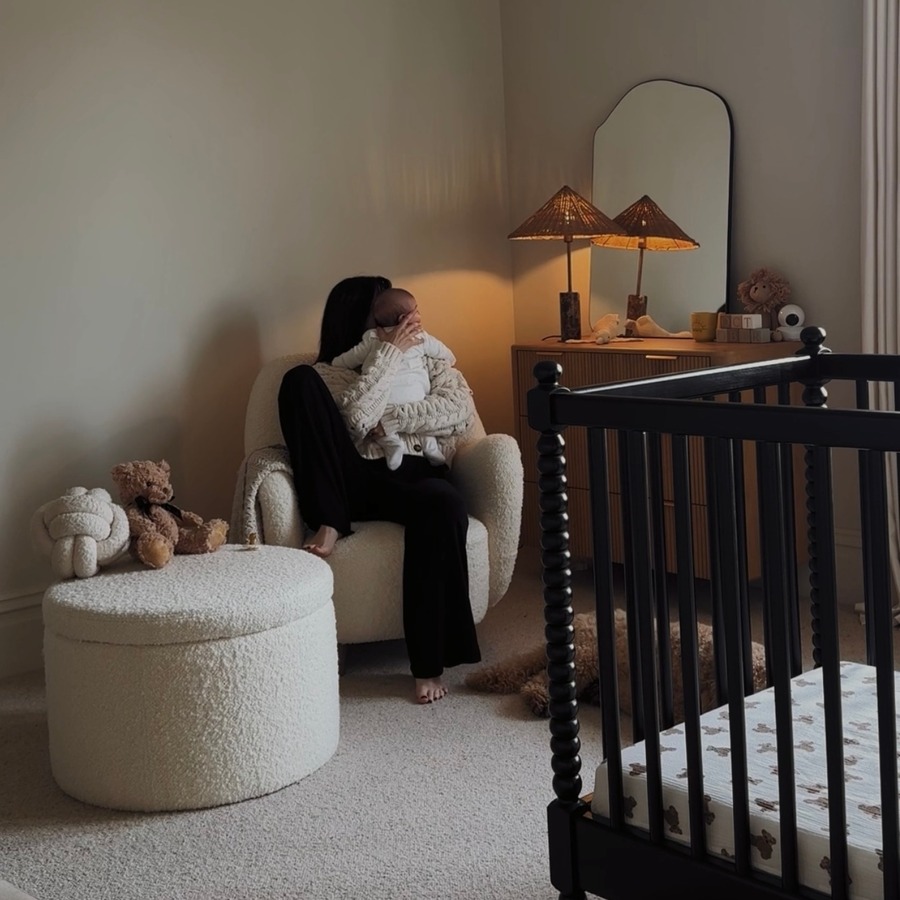
Where it all began…
Interior guru, Chelsea Stonier aka @thehousethatblackbuilt has mastered a blend of modernity and timeless Victorian style, building a home that’s chic and classic. A unique account name, we wanted to dive into the inspiration behind the name…
“When renovating our first house (back in 2015!) it took a long time to find our style. It’s when we finally started to use the colour black – which I was originally too nervous to do – that we felt like we’d finally found it. Hence, the house that black built.
“Admittedly, in our current house we haven’t used as much black, and my style has definitely evolved but it’s what gave me the confidence to do what I loved, not what everyone else was doing so it remains relevant to me. Plus I’ll always have a little bit of black in every room!”
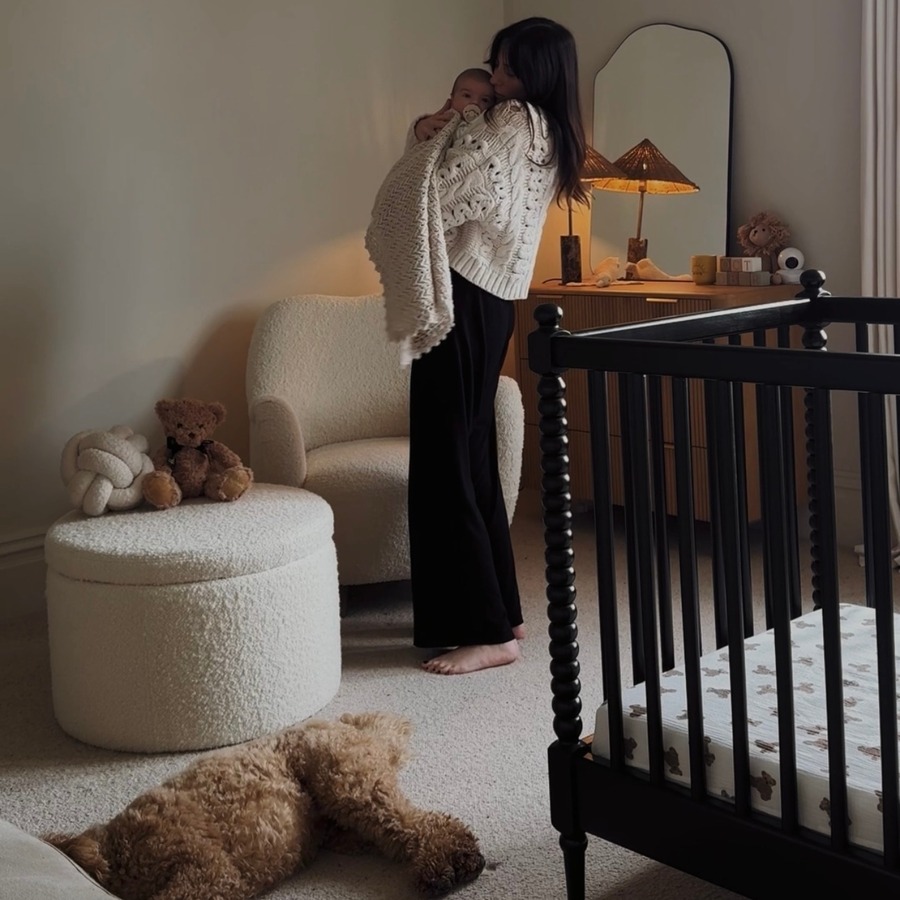
Mastering renovation
A lick of paint here and new furniture there… curating a stylish home can seem straight forward. Yet as those who have crossed the waters of renovation will know: creating a home that works for you is harder than it seems! Here’s the tips that Chelsea learnt when developing her most recent project.
“I’d say live in the space for as long as you can before you make any decisions/start renovating. We are currently undoing some of the first work we did when we moved in because we rushed into it and made a few mistakes. Start a Pinterest board to gather inspiration for what you like – refer back to it as your making decisions to make sure you’re keeping on track. It’s easy to be swayed by current trends but you’ll love your home for longer if you stick to what YOU like.”
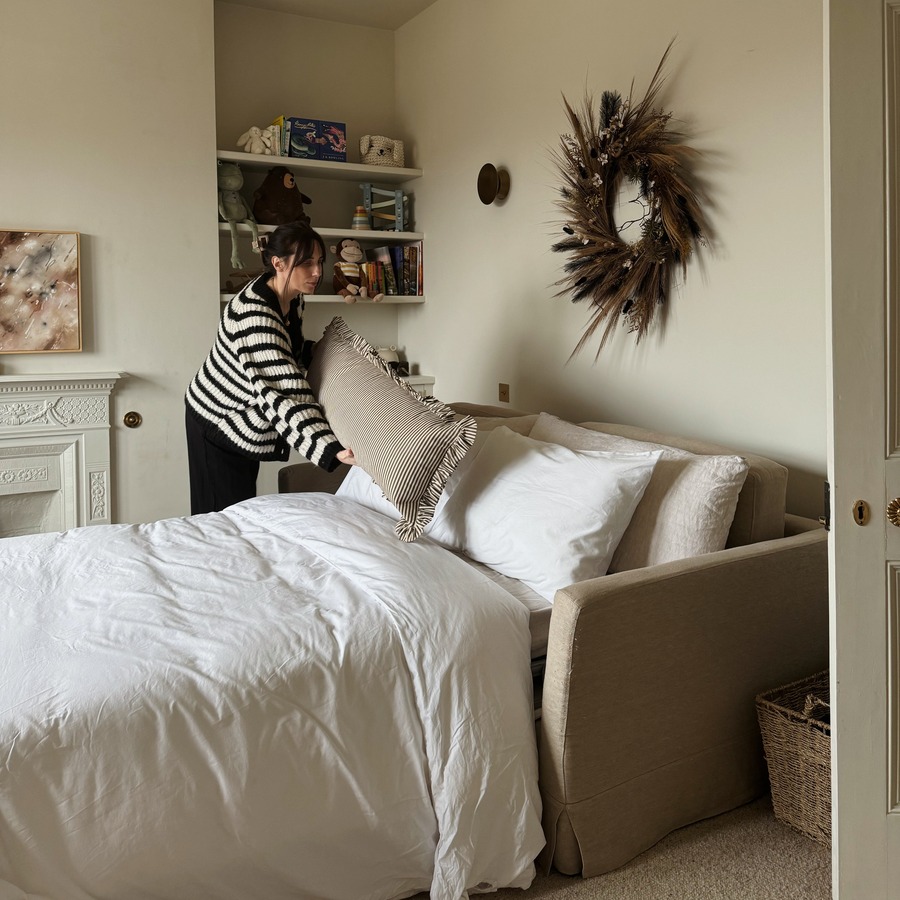
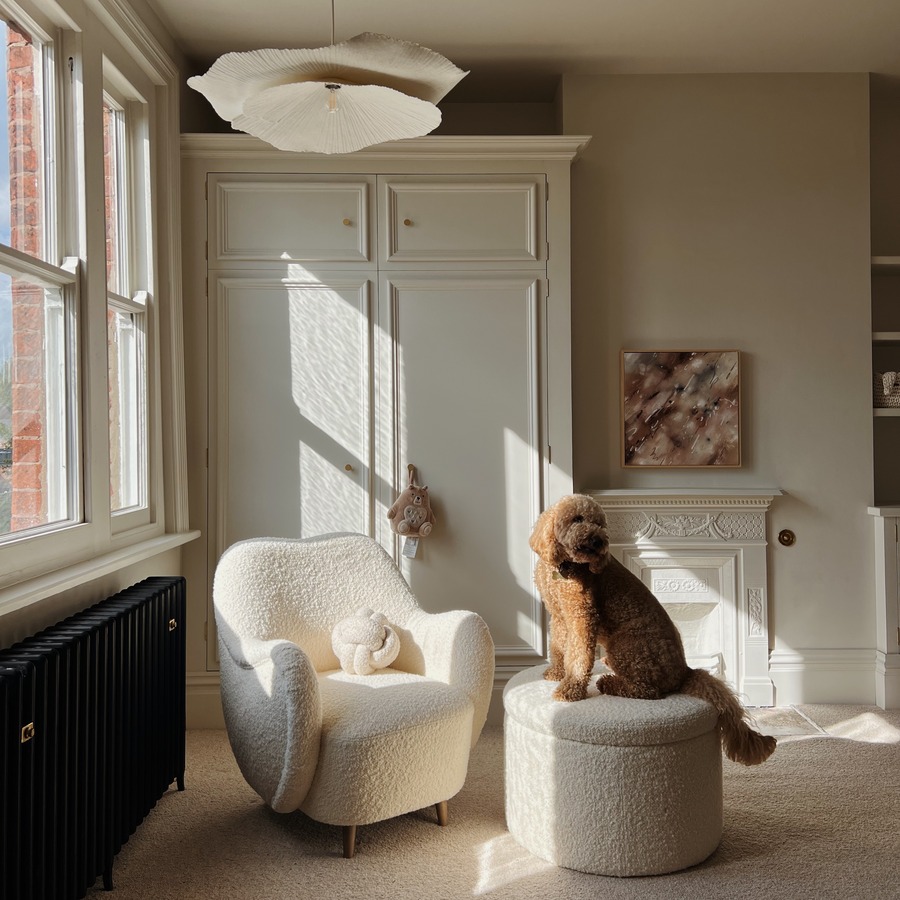
Love that lasts
Family life constantly evolves, with needs changing from year to year making interior design tricky. Chelsea shares her key choices and how she’s created growing room in her space.
“We made sure our storage would be suitable for much longer than just the baby stage, so it will last much longer – decorating with a baby/toddler isn’t easy! I wanted built in storage that looked in keeping with our home and could grow with our baby.”
“We’ve kept our colours neutral – because that’s our thing – but also for the room to be a calming space. I don’t want to stimulate the baby just before bedtime. I tend to layer neutrals but if I did want to add a pop of colour, it’s easy to do that with art work and soft furnishings – and, more importantly, change it easily again when I’ve inevitably had enough. Oh and black out blinds are also a must for a nursery!”
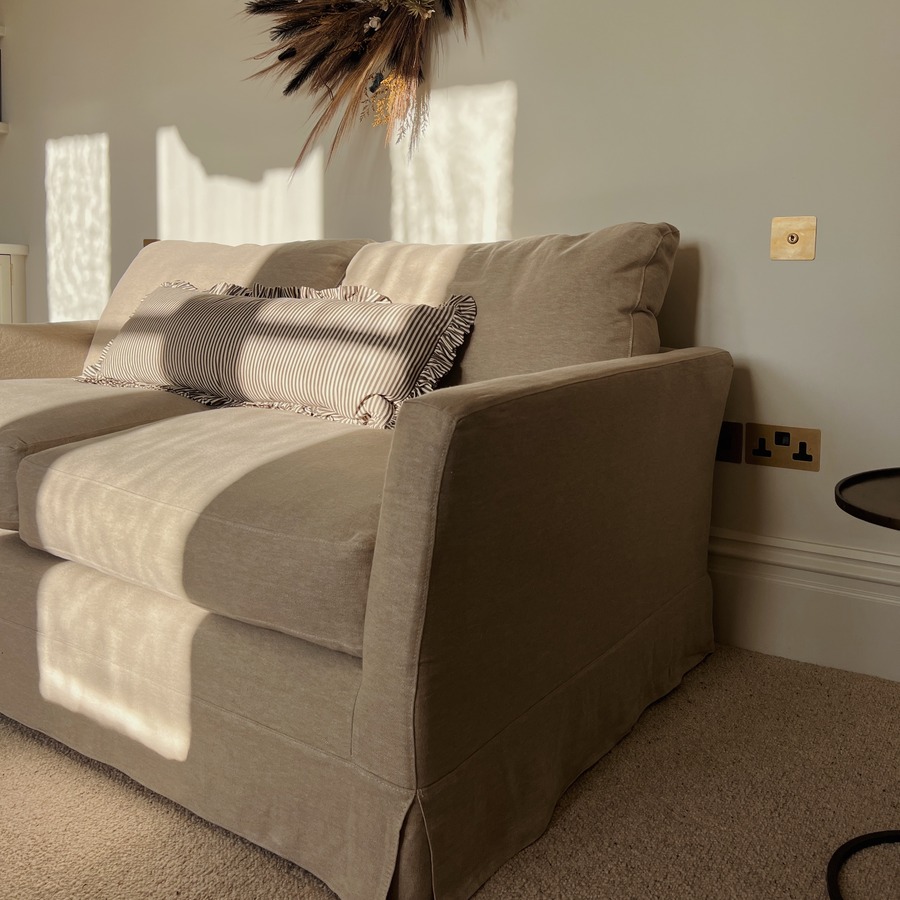
Around the clock comfort
When creating a family home, practicality should always be a priority. From additional of storage to maximising comfort and ensuring easy maintenance, your day to day essentials should be considered. @thehousethatblackbuilt has achieved a pragmatic interior without deterring from her sophisticated style.
The Otto Sofa Bed
“I thought a sofa bed would be a great use of the extra space for a multitude of reasons (eg. extra bed for guests or if one of us needs a break during hard nights, perfect spot for story time snuggles) The Otto is just like my style – a modern take on traditional style, so I knew it would work perfectly in our Victorian home. I love the effortless, ‘lived-in’ look of the linen fabric and fully remove-able covers are a no-brainer with a kiddo!”
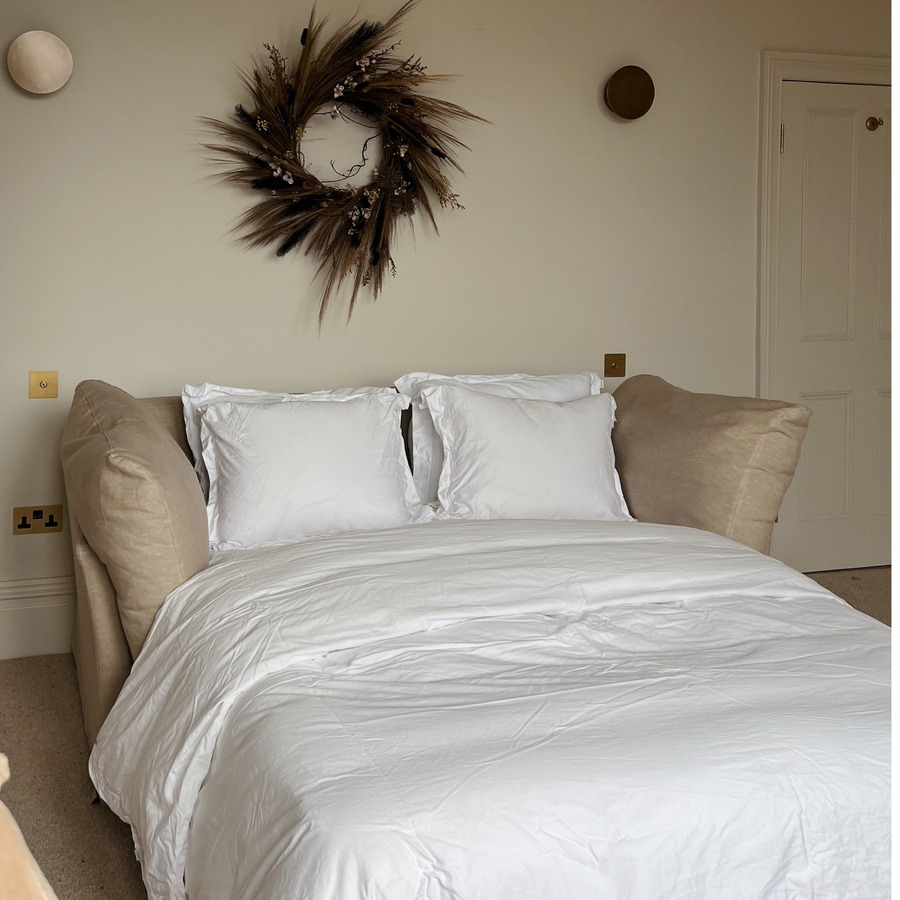
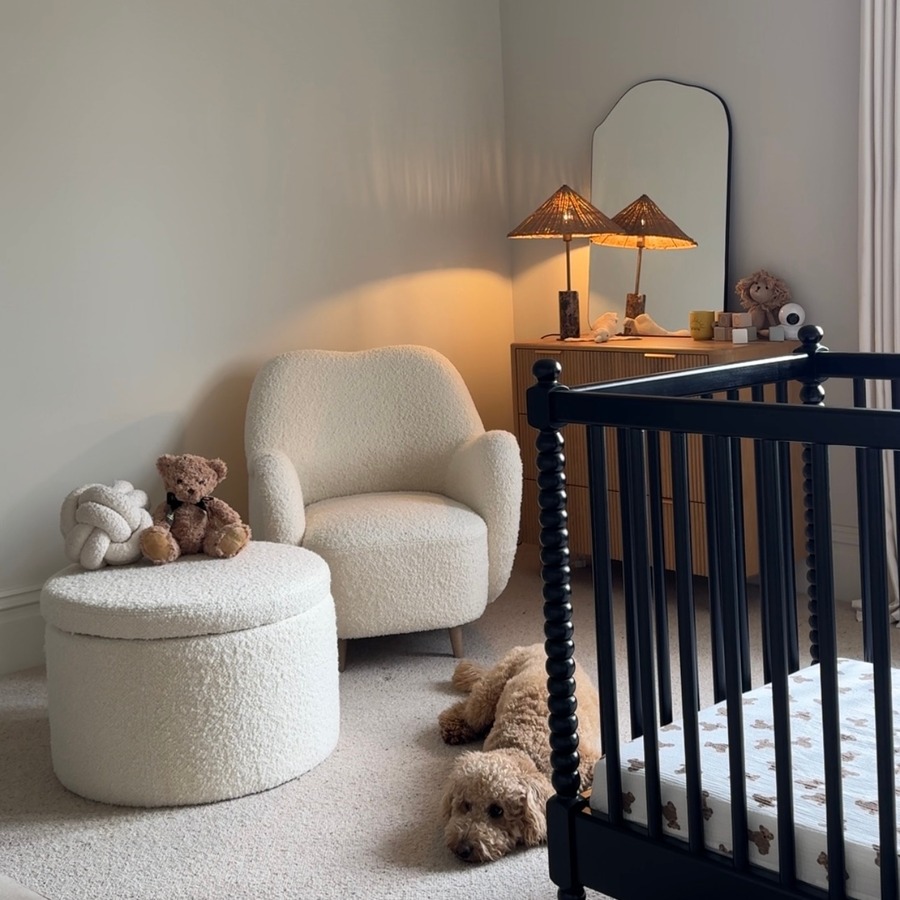
The Ginger Armchair & Luna Storage Footstool
“I LOVE the shape of the Ginger armchair. It’s so unusual, such a stylish focal point and so comfortable; especially for nursing. The boucle fabric suits it so well and I feel like it’s the perfect aesthetic for a nursery; lovely fluffy, cloud-like texture. I chose the Luna footstool in the Oyster boucle to match so it intentionally looked like a set. Somewhere to put your feet up AND the extra storage is essential.”
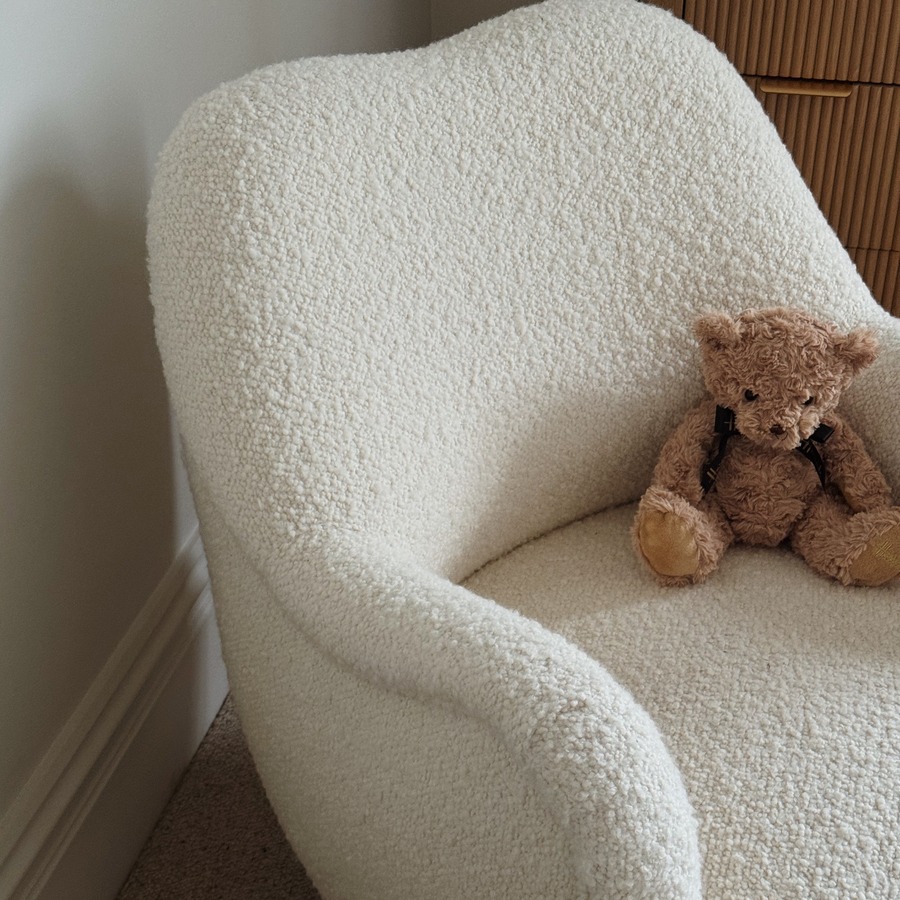
Making a house a home
“As cheesy as it sounds, the people make a home! If you want to talk design wise though, it’s all the finishing touches and a lived in feel – artwork, photos, soft furnishings, trinkets and things that mean something to you. Embrace the water marks on the marble, scuffs on skirting boards and half melted candles. A home that looks lived-in is the sign of memories being made. This is the stage that we are at now, finally adding elements that make it look and feel like home – rather than a building site.”
